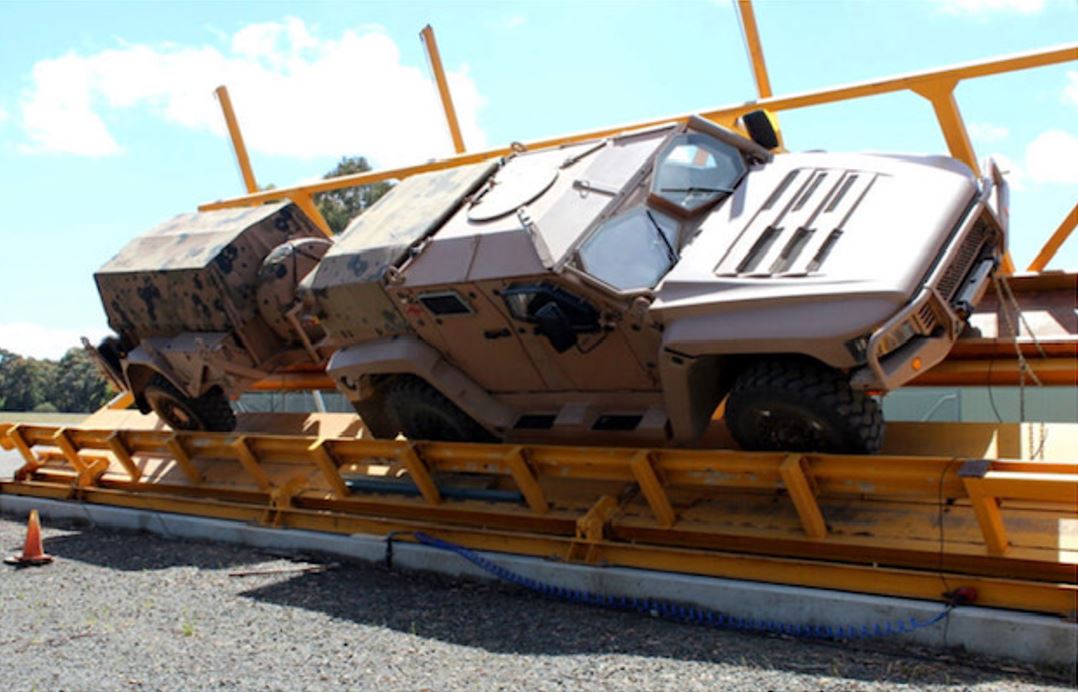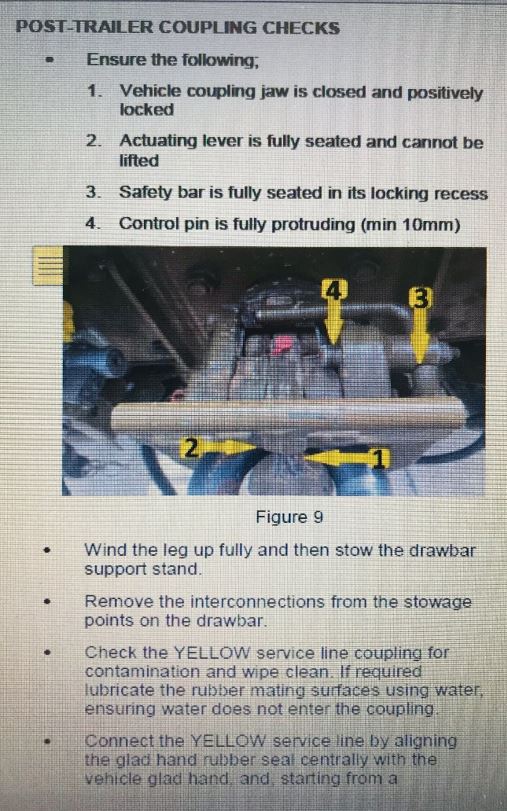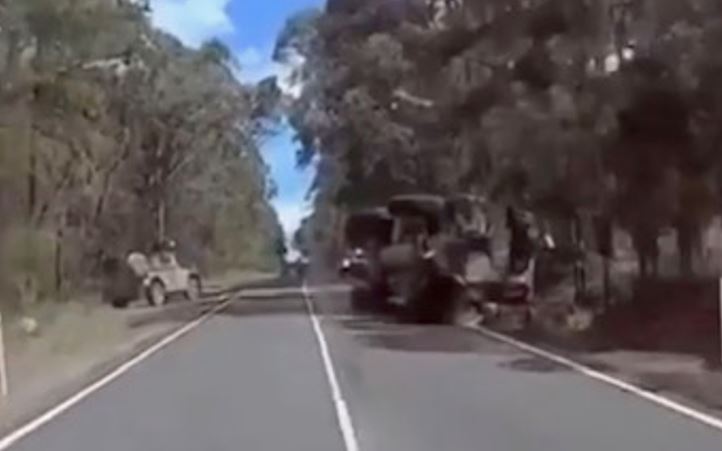‘Mark seven times and cut once’ Benvenuto Cellini (1500-1571)
If you have attended the Darwin boat ramp on any given Sunday morning, you would have witnessed the importance of a skilled trailer operation with your own eyes (and perhaps ears). At the ramp, you can see the best and worst driving, but also witness the critical role of the connect/disconnect process - at times the stakes can be high. With this visualisation in mind, we can see the applicability to our organisation.
As Army's training and operational loads have grown, so too have the physical loads. Much of the vehicle borne load has now shifted with the use of trailers. However, towing significantly alters the dynamics of a vehicle and increases the demands on the driver's skill set. The new driving demands can challenge even the most experienced drivers, particularly in the case of trailer misbehaviour. Further, competing ADF tasks can make a driver's job challenging and unpredictable, so everything must be done to ensure these additional driving stressors are avoided.
The complexity of driving with trailers was recently highlighted when the Technical Alert Bulletin (TAB) 0170 was released on 04 Feb 2021. This bulletin was released in response to a spate of trailer disconnects from HX / L121, but also other (including white) vehicles (1). Investigations highlighted some procedural lapses, publication shortfalls and information access shortfalls. Despite using a coupling system familiar to the organisation, the incidents were spread over a range of services, units and locations, making the root cause of these occurrences a challenge to identify for CASG and the Vehicle Safety team. Regardless of the difficulties, what became clear is that trailer disconnects COULD HAPPEN TO ANYONE. Clearly this is not good enough. So what can we do about it?
 What Army does about it – Hawkei rollover testing – Significant effort goes into static and dynamic performance (Thales)
What Army does about it – Hawkei rollover testing – Significant effort goes into static and dynamic performance (Thales)

The Double Check - ‘Prevention is better than cure’ Desiderius Erasmus (1469-1536)
- Posing the question ‘did you check it?’ is better asked when sitting down to drive, rather than when being overtaken by a trailer.
- Having a mental checklist is a great tool but only to the extent that it is ROBUST, REALISTIC and REPEATABLE.
Robust means that it does what it is intended to do. A user of the procedure must be able to see a poorly hitched or faulty trailer and use their checklist to diagnose the issue - entering the procedure at an appropriate point.
Realistic pertains to the usability of the checklist for the job. Practice as the user and the checker.
Repeatable means it works every-time, no matter the conditions. Like a bowline knot.
Technical Publication procedures are the ONLY way to ensure that the job is done correctly and you are compliant and protected.
WE ALL MAKE MISTAKES - We're only human.
You’re late, the weather is coming in and the pressure is on. Unless there is a serious reason to rush (combat imperative) – don’t rush.
If you are catching an airliner and it is at the terminal running late – the pilots are slowing down and double checking everything. Why? Because WHEN YOU RUSH YOU ARE MORE LIKELY TO MAKE A MISTAKE.
The reason is task saturation. When saturated you will do one of three things:
- Shutdown (do nothing);
- Compartmentalise (mental isolation); or
- Channelise (target fixation).
It is important to know this, so you can combat the effects. Jim Murphy, of After Burner, is a former USAF Fighter Pilot who specialises in human performance. His advice is ‘tell someone’ when you're reaching task saturation. If someone knows you are overloaded - they can offload you. ‘Use checklists, cross checks and mutual support to keep saturation at bay’ (2).
Lessons Learned
1. INSTRUCTORS - It starts with you. You will find students have common traits that you need to teach around. For example, young women tend to be less assertive – encourage them to question. On the other hand, young men tend to be overconfident – let them fail under controlled circumstances. With trailer use being moved to units, it’s important to raise awareness at the basic level to smooth out the transition and ensure junior driver graduates are able to confidently check a connection.
Rolled Bushmaster on a straight road – Physics doesn’t care how good you are (ADF)

2. LEARNERS - Question everything, including your own actions. Figure out what your weaknesses and limitations are. Ask questions. Spend that moment after you get in the drivers seat to sit still and think about what you have just done and if it was completed correctly. If you're unsure - then check it. IF THERE IS ANY DOUBT -THEN THERE IS NO DOUBT YOU NEED TO CHECK.
3. SUPERVISORS - Manipulating the workload to allow time to check and double check, and promote a healthy culture of procedural suspicion means you arrive at the fight with all of your kit.
4. PASSENGERS and OTHERS - These categories are not exclusive. Coupled with the 'startle factor', a trailer disconnect can rapidly consume brain power and overwhelm a driver's ability to act appropriately and decisively. A driver compartmentalising may even appear to be doing the right thing. Provide input: ‘STOP!’, ‘STEER LEFT!’. Be clear and directive. In this situation, the PASSENGER/S become the co-driver using their spare capacity to assist the recovery. More importantly, before departure passengers can follow around and assist the driver in completing the procedures. Sometimes it is as important to get in and ask the question: ‘Are we ready?' 'Is everything secure and the checklist completed?' 'Are you sure?’ . Further, be alert for any uncertainty and commend the driver who asks for a double check.
Multi-Tasking
If you don’t already know or if you haven’t already been told: You are not good at multi-tasking - it's not a thing. Research shows that everyone suffers reduced performance as workload increases, but men significantly more so than women (3). On the other hand, women tend to respond over a greater emotional range (positive and negative). What do we do with that information? Think about how you react to simple everyday changes in workload. When you try to do two things at once, you are not able to concentrate or complete either task overly well and it also impacts your emotional responses.
Distraction vs Vigilance
Imagine if the Army Aviation moto was ‘DISTRACTED’. It isn’t, the moto is Vigilance - but the idea is laughable, because the latter is the cure for the former.
Vigilance is defined as the ability to sustain attention and remain alert to a particular stimulus over a set period of time (4). Distraction is the enemy in this case, because if you are interrupted halfway through a task there is a danger it can remain incomplete. In this case compartmentalising a task can be useful. Checklists do that for us by ensuring the task is completed in sequence. So there are several chances to ensure a task (connecting the trailer) is done correctly: concentrate, start again if interrupted, do the checklist (and start the checklist again if interrupted). Tiger pilots do it, as do Joint Strike Fighter pilots.
ADF owns trailers for a reason. We, as a force, are not tolerant to the loss of kit, vehicles or personnel at the fight. It does nobody any benefit to see our weaknesses as human beings, intentional or accidental, turned into damage or harm - so take the time to acknowledge and learn.
Follow procedures, double check, be vigilant and back each other up. Nobody wants to be in a position like watching their car and/or trailer slide into the ocean or another boat and float away to the cheers and jeers of impatient fishermen juggling the decision to swim out or not (NB: Do not swim off the Darwin boat ramp!).










well said mate ,we hookup the van, check everything, stop within a km, check it all again, it always works,
anyone can make a mistake